
Looking for ideas for your next scuba diving adventure? Here’s a rundown of the best places in the world to scuba dive, according to DIVE’s readers.
Quick links:
- Raja Ampat, Alor, Komodo – Indonesia
- Malapascua – Philippines
- Egypt and the Red Sea
- Palau
- The Riviera Maya – Mexico
- The Maldives
- Galápagos
- Malta, Gozo and Comino
- Silfra Fissure – Iceland
- Great Barrier Reef – Australia
- Curaçao, Bonaire, Saba
- Five more you can’t ignore…
Raja Ampat, Alor, Komodo – Indonesia
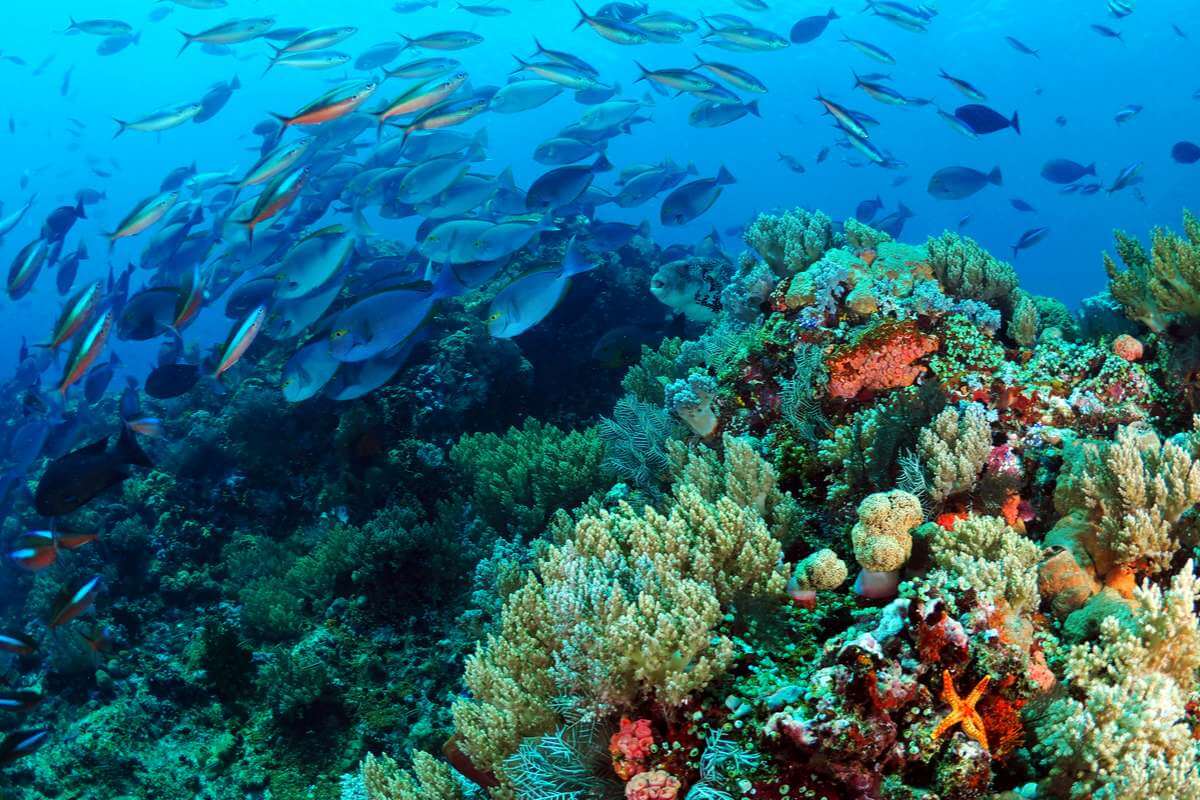
The Indonesian Republic is regularly voted as the best place in the world to scuba dive. The country consists of more than 13,000 islands, each having its own distinct identity both above and below the water.
As part of the Coral Triangle – regarded by marine experts as the most biodiverse habitat in the world’s oceans – Indonesia could easily lay claim to the top-ten dive spots all by itself, with Raja Ampat, Alor and Komodo National Park ranking among the best.
Raja Ampat, located off the coast of New Guinea, is home to more than 75 per cent of all known coral species and more than 1,500 species of fish, often congregating in massive numbers with sharks and other pelagics regularly sighted among them. The island of Alor is famous for schools of hammerheads, along with a plethora of critters from the monstrous to the minute, a place for both wide-angle lenses and macro in the muck.
Komodo National Park also provides an excellent opportunity to discover the best of both worlds. Although there are sheltered spots for novices, the islands are all prone to very strong currents, so a little bit of experience under the weight belt is essential for enjoying everything these three particular locations have to offer.
While Raja Ampat and Komodo are often considered the best, Indonesia is home to many more top-quality dive spots including the Nusa Islands of Lembongan and Penida, the black sand macro of the Lembeh Strait, and, of course, the legendary Wakatobi National Park.
Check out: The best places to scuba dive in Indonesia
And also: The best places to dive in Bali
Malapascua – Philippines

Palawan, Cebu, Boracay, Puerta Galera and more, all part of the Philippines which, like Indonesia, lies in the Coral Triangle. Malapascua, a tiny little island just off the shores of Cebu, is world-famous for regular sightings of thresher sharks, but even if these magnificent fish don’t make an appearance, the Philippines as a whole has plenty to offer.
More than 500 different species of hard and soft coral are found in the region and other large creatures such as manta and hammerheads are often spotted, along with jackfish and barracuda schooling by the thousand.
Dugong are resident in the area and there are plenty of wrecks to explore, as much for the prolific fish life as for the wrecks themselves. Diving is year-round, in water that rarely requires anything more than a 3mm shorty.
Check out: DIVE’s essential guide to scuba diving in the Philippines
Egypt and the Red Sea
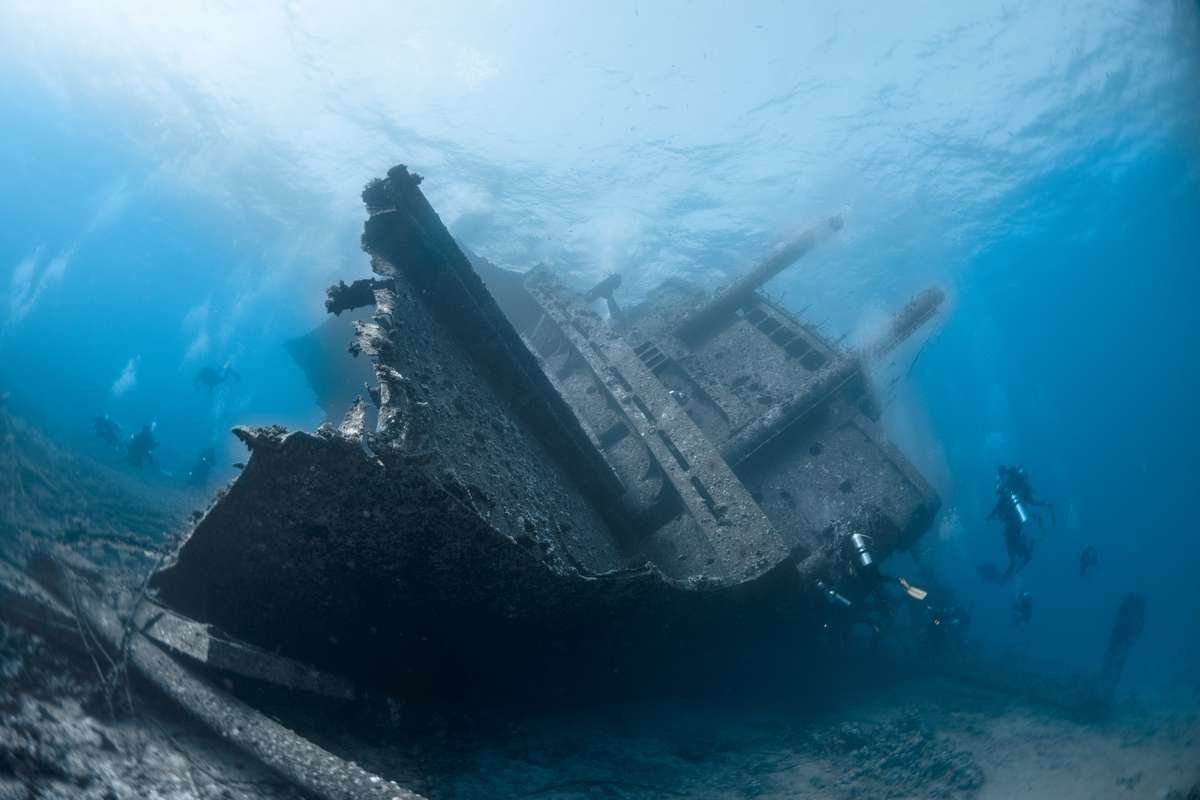
No article about the best places in the world to go scuba diving would be complete without the Red Sea, especially Egypt, the most popular Red Sea diving destination. From brightly coloured nudibranchs and long-nosed hawkfish to oceanic whitetips, hammerheads and whale sharks; novice to technical expert, the Red Sea has something for everybody.
The resort town of Sharm El Sheikh on the Sinai Peninsula is a particular favourite, home to Ras Mohamed National Park and the Straits of Tiran; Dahab and its (in)famous Blue Hole 80km to the north is well worth a visit.
The mainland resorts of Hurghada, El Gouna, Safaga, El Quseir and Marsa Alam provide access to a wealth of spectacular reefs, and further afield, best explored by liveaboard from Hurghada and Marsa Alam are Elphinstone, Daedelus, the Brothers and the deep southern reefs of St Johns and Zabargad
Red Sea coral is diverse and extraordinarily colourful, highlighted by near-permanent year-round sunshine in clear blue waters in the world, not to mention some of the best and most accessible wrecks in the world – including the Giannis D, Carnatic, Dunraven and, of course, the SS Thistlegorm.
Other Red Sea highlights include the beautiful reefs of Eilat in Israel, and Aqaba in neighbouring Jordan, which is also home to the excellent wreck of the Cedar Pride. Those feeling more adventurous may fancy a trip to the little-visited and largely untouched reefs of Sudan.
Check out: DIVE’s essential guide to scuba diving in Egypt
And: Ten of the best places to scuba dive in Egypt
Palau
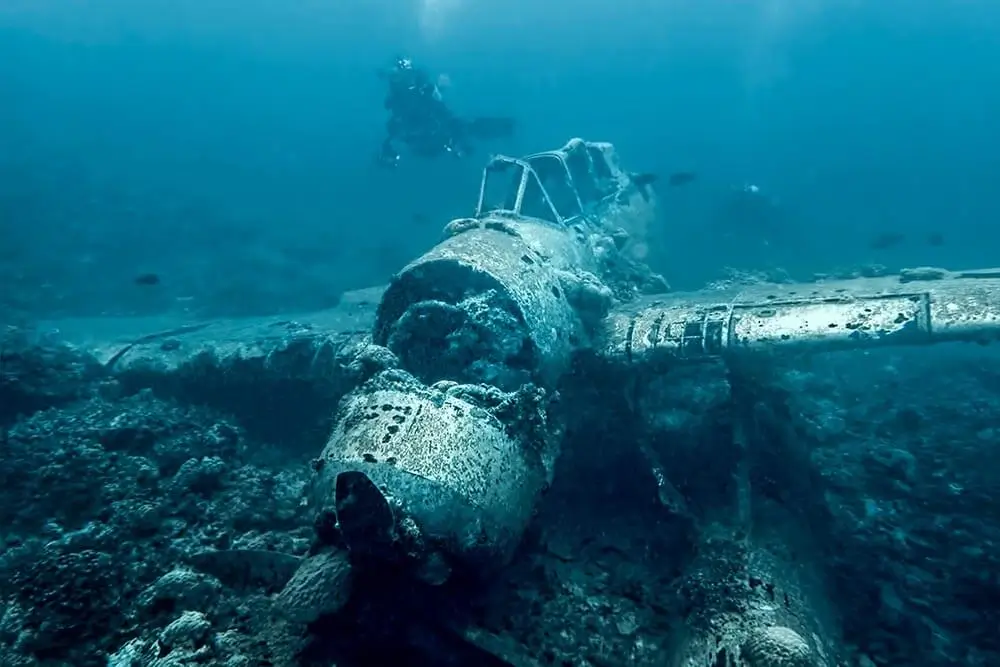
To the south of the Phillippines, Palau is regularly described as ‘an underwater paradise’ in diving destination reviews, and provides a welcome escape from the busy resorts of other locations.
The waters are known for their strong currents, so the diving is definitely not for the faint-hearted, but if you’re not afraid of the ocean trying to remove your mask, and are competent enough to use a reef hook without touching anything you shouldn’t, then Palau is a place where you can spot pretty much everything, from macro to pelagic, in a single dive. The stronger the current, the better the action.
Dolphins, manta cleaning stations and so many different species of nudibranch that half of them aren’t even classified, all contained within an amazingly diverse and vibrant coral reef.
Palau is also home to a number of diveable wrecks from the Second World War, including the 143m-long freighter, Iro Maru, and one of the most famous aircraft wreck dives in the world, Jake’s Seaplane.
The Riviera Maya – Mexico
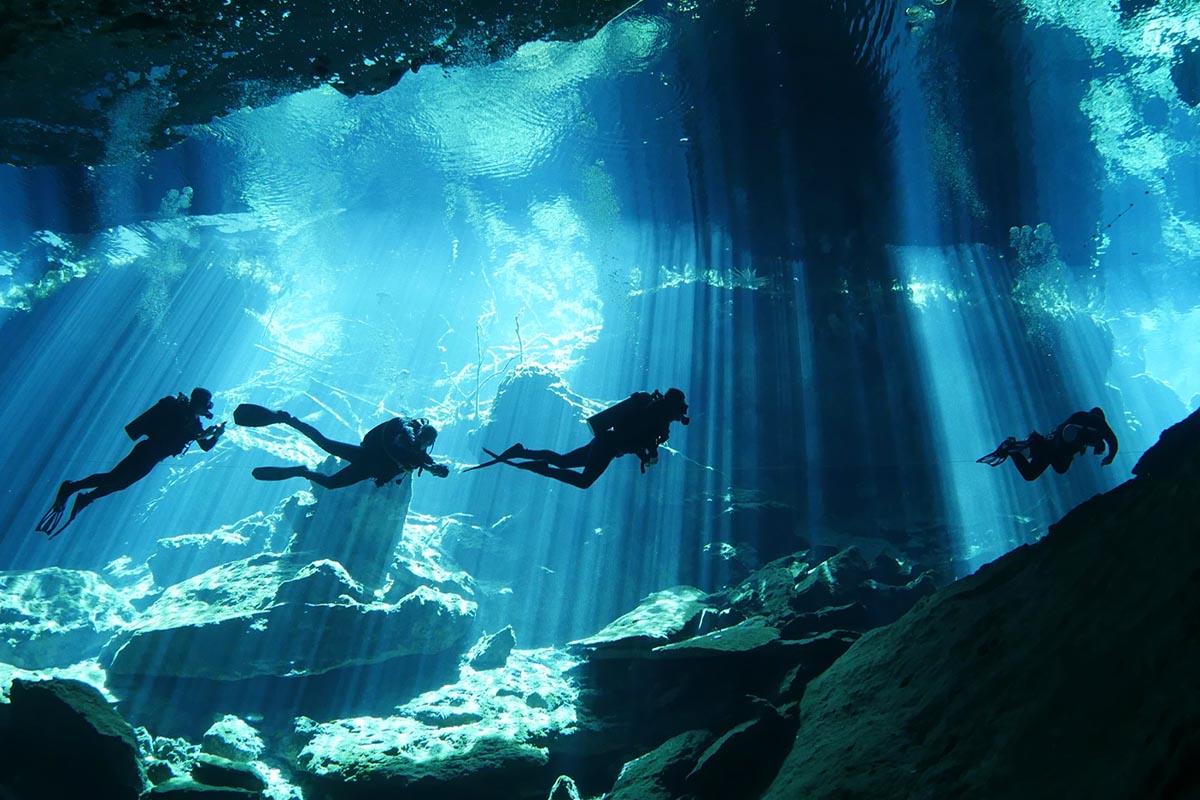
Located in Mexico’s Yucatán Peninsula, The Riviera Maya is Mexico’s top holiday resort destination and very highly regarded by divers. The deep sinkholes known as Cenotes are one of the area’s most famous features, and the extensive underwater cave system to which they grant access is the second-longest in the world and easily the best for scuba diving.
While technical and cave diving expertise is required to explore the cave system in full, there are plenty of easier, accessible caverns more suited to the recreational diver, plus the extensive coral reefs of the coastline, and the beautiful island of Cozumel
Out to sea, bull sharks and sailfish are commonly encountered during the winter months, and the summer brings nesting turtles and a host of whale sharks – visitors to the nearby Isla Mujeres have reported sighting groups of up to 20 adults gathered together.
Check out: DIVE’s scuba diving guide to Mexico
And: Working Together- Mexico’s bull shark dives
The Maldives

A popular and tranquil island paradise, the Maldives is comprised of 26 different atolls that straddle the equator, with a total land mass of just 298 square kilometres (115 sq mi) of the nation’s total 90,000 sq km (35,000 sq mi) territory.
Diving-wise, the Maldives have a good mixture of the large and the little, with a good chance – almost guaranteed at certain times of year – of spotting manta rays and whale sharks, while locations such as Fuvamulah afford divers the chance to see a host of tiger sharks. There is plenty of smaller life to be found among the extensive coral reefs and submerged pinnacles (thilas), from huge schools of tang and sweetlips to the tiniest macro critters.
There are plenty of luxurious island resorts that cater to divers, but the best way to explore is by liveaboard to take in as much of the marine biodiversity as possible. Diving is year-round in mostly calm conditions, but currents
Check out: The best dive resorts in the Maldives
Galápagos

Famous as the inspiration behind Charles Darwin’s theory of evolution by natural selection, the Galápagos Islands, some 900km off the Pacific coast of Ecuador, are home to a vast collection of endemic species.
The remote location and protected status of the islands provide what many people regard as the most complete diving experience on the planet; a place where you can find whale sharks and schooling hammerheads along with sea lions, penguins and marine iguanas.
Getting there might not be easy, and exploration is best done from a liveaboard, but the diving there makes travel to the Galápagos Islands more than worth the effort.
Check out: Galápagos: can even the fittest survive?
Malta, Gozo and Comino
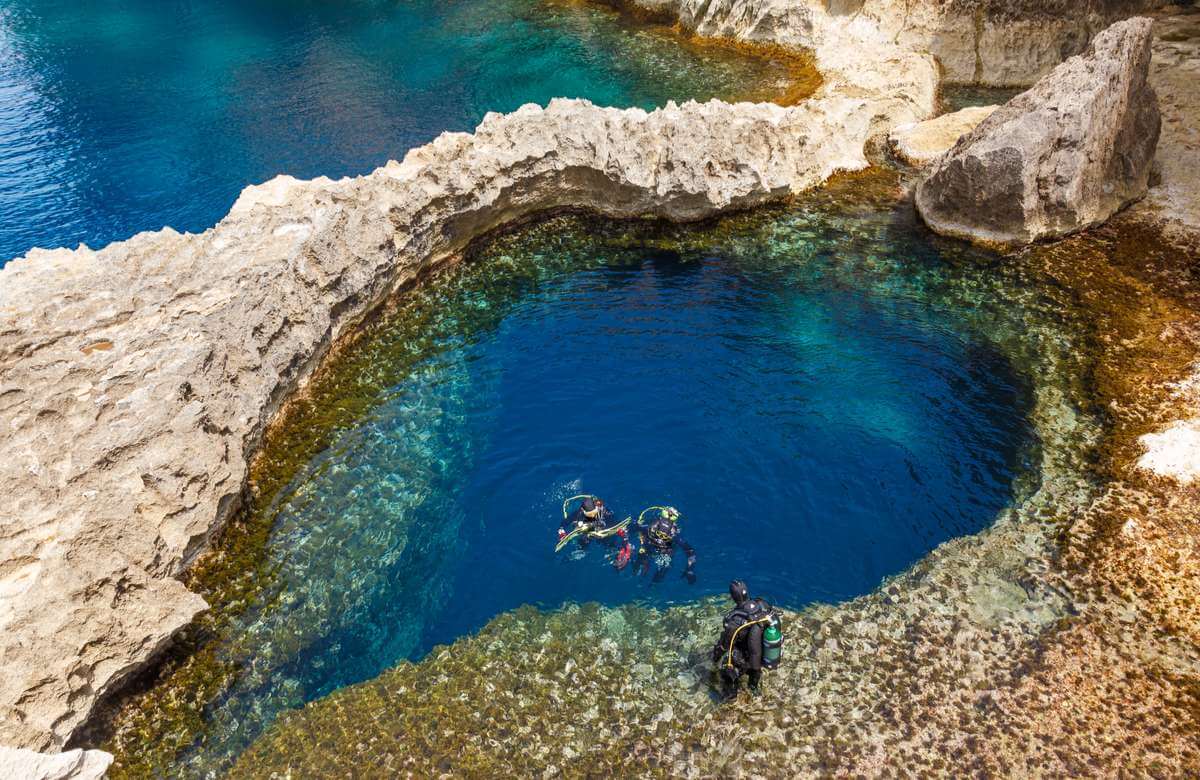
With some of the most excellent wrecks and stunning underwater topography in the northern hemisphere, and just a short hop from most major European airports, the Maltese islands are a must-dive location for recreational divers and techies alike.
Divers are treated to vast underwater arches and beautifully lit caves in waters with superlative visibility and an array of interesting aquatic life. There are a number of notable wrecks for recreational divers including the famous sunken oil tanker, Um El Faroud and the tugboat Rożi. Technical divers will enjoy the protected deep wrecks from the First and Second World Wars, including HMS Southwold and HMS Russell, among others
Malta’s agreeable climate allows for year-round diving – although it’s chilly in the winter – in a very relaxed environment. The smaller island of Gozo is a quiet and picturesque retreat for those that aren’t in need of a boisterous nightlife, and Comino’s caves are perfectly suitable for the inexperienced but inquisitive novice.
Check out: Malta’s best wreck dives
Check out: Malta’s deep wrecks – a six-part series
Silfra Fissure – Iceland

Diving in Iceland? Yes, really! Drysuits are a year-round essential, but Iceland‘s most famous dive site, Silfra – or the Silfra Fissure – has some of the clearest water to be found on the planet, unpolluted by run-off, silt and – well – fish. In fact, the only impediment to the perfect visibility is the continent on the other side of the dive site.
Widely regarded as one of the most spectacular dives in the world, Silfra itself is relatively unpopulated by marine life, but there are plenty of other places in Iceland to discover the aquatic denizens of the North Atlantic.
Of particular note are Arnarnesstrýtur and Strýtan, geothermal chimneys pumping volcanically heated, mineral-rich water directly into the cold ocean – the only places in the world where recreational scuba divers can encounter such a feature.
Check out: Scuba diving Iceland’s Tears of the Gods
Great Barrier Reef – Australia

It’s all spectacular, but head north away from touristy places like Cairns to the Ribbon reefs around Lizard Island and you are in for a treat. Gloriously unspoiled reefs, far away from human activity and only dive-able from a liveaboard, fish of all shapes and sizes congregate en masse.
Sharks of various different species are so plentiful that after a couple of dives, you start looking for other things – such as humpback whales, for example, along with potato groupers at the famous Cod Hole that are so large they would be terrifying if they weren’t so friendly. Expect to be nudged in the hope of a treat.
There are a very limited number of boats allowed to visit, and they operate on schedules that avoid each other, meaning you get to enjoy the spectacular underwater scenery without too much interruption from other dive teams.
Check out: Diving Australia’s HMAS Tobruk – the ‘Secret South’
Curaçao, Bonaire, Saba

Although the Netherlands Antilles was officially dissolved in 2010, the islands that had previously been administered as Dutch colonies are still collectively known as such, comprising Aruba, Bonaire and Curaçao just off the Venezuelan coast, and St Maarten, Saba and St Eustatius not far from Puerto Rico.
Of these, Bonaire, Curaçao and Saba rank high on the list of places to dive in the Caribbean, a little less touristy and a lot less expensive than some of the better-known Caribbean destinations.
It’s not the place to go if you want to find lots of big stuff, but the rich and relatively unspoiled coral reef system, from shallow and level with minimal current, to spectacular walls and pristine drifts, is colourful and vibrant, with year-round excellent visibility, all on small islands with a combined Caribbean and European vibe.
Check out: Dive into Curaçao – world-class Caribbean diving
More from some of the best dive destinations in the world
Five more you can’t ignore…
Similans National Park – Thailand

Best dived from a liveaboard out of Phuket / Khao Lak, although some of the closer islands can be visited on a daily boat trip particularly from Koh Lanta. Spectacular in every respect and the seamount of Richelieu Rock should be in every diver’s want-to-go places. Best diving is from October to May.
Sipadan/Mabul – Malaysia

Two islands of extreme contrast, Sipadan is all about the big stuff, and the turtle graveyard a haunting experience. Mabul claims to be the island where the term ‘muck divin’” was invented, a delight for the macro photographer.
Check out: DIVE’s guide to the top dive spots of Malaysia
The Bahamas

Blue holes, caves, sunken Spanish galleons, dolphins, and top of the list on many divers’ itineraries, the awesome close encounters with Tiger Sharks.
Florida Keys – USA
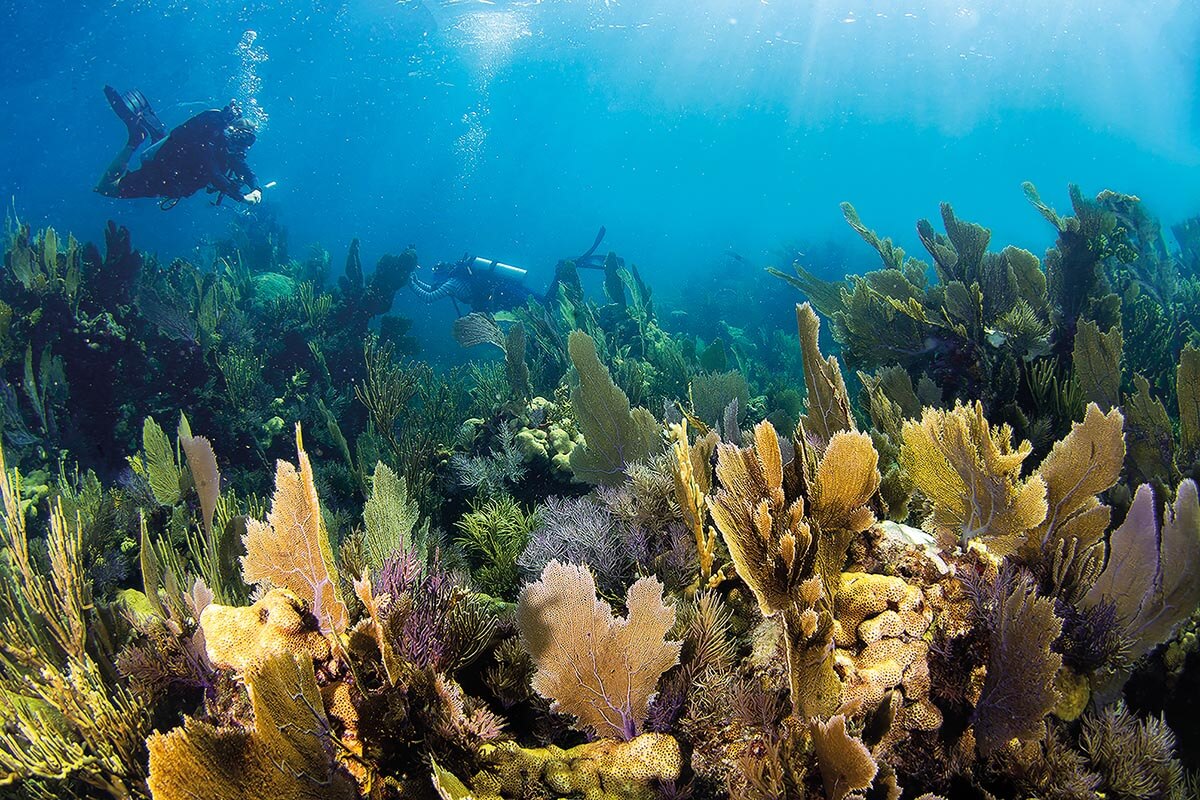
The Florida Keys are widely considered some of the best diving in the United States, home to around 45 species of stony corals, 35 soft corals and more than 500 species of fish, five of the seven species of sea turtle, and a variety of sharks and rays. Diving is year-round in generally warm and clement conditions, plus the added bonus of laid-back topside entertainment.
Check out: Scuba diving Florida Keys’ coral archipelago
UK and Ireland

The waters around the British Isles are amazingly rich and diverse marine habitats, where you can encounter creatures that you will simply never find on a tropical reef. From small favourites such as tompot blennies to big stuff like basking sharks, there is plenty to satisfy divers of all experience levels – and, of course, the many wrecks that litter the coastline.
Check out: Ten of the best dive spots around the UK & Ireland
More from some of the best dive destinations in the world
- Don’t shop – dive! ‘Blue Friday’ celebrates its fifth birthday - 21 November 2025
- Suunto launches new Nautic & Nautic S dive computers - 18 November 2025
- Generations Below – a father-son team working to build a global underwater treasure hunt - 11 November 2025


